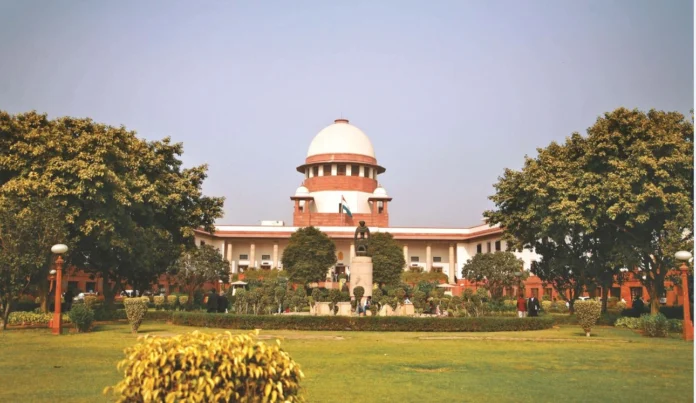By Binny Yadav
It wasn’t a landmark constitutional bench, not even a high-voltage political matter, but only a routine parole application—one among thousands that move through the judicial system every year. But when the Supreme Court sat down to hear Ajay Kumar vs State of Uttar Pradesh this June, the hearing took an unexpected turn. As the bench listened to junior counsel stumble through procedural missteps, the concern was no longer parole law—it was professional erosion. “The whole trouble with this generation is that they don’t want to go to the trial court to learn the practice,” remarked Justice SVN Bhatti, speaking for the concerned bench also comprising Justice Prasanna B Varale.
It was a moment of sharp judicial candour. And it landed like a gavel across India’s legal ecosystem.
A PAROLE PLEA BECOMES A MIRROR
The case in question involved Ajay Kumar, a convict serving a 10-year sentence under the Protection of Children from Sexual Offences (POCSO) Act. His appeal was still pending before the Allahabad High Court, and his legal team was seeking parole.
What should have been a procedural formality quickly became a portrait of the deeper malaise: junior lawyers unacquainted with even basic elements of courtroom practice—forms, deadlines, extensions, filings—were left floundering before the nation’s top court.
That moment, the judges sensed, was not about an individual mistake. It reflected a systemic drift: the trial court, once the default training ground for generations of lawyers, is being bypassed.
THE VANISHING FIRST STEP
For decades, the trial court was where young lawyers cut their teeth. From cross-examining witnesses and framing issues to applying evidence law and navigating procedural nuances, the courtroom was the university beyond law school.
Today, many law graduates—armed with corporate internships and theoretical knowledge—set their sights directly on High Courts, tribunals, or constitutional litigation. Few are willing to wade through the grind of the district courts.
And the cost? Legal veterans say it’s not just about procedural slip-ups—it’s about the hollowing out of a profession that risks becoming fluent in theory, but untrained in practice.
WHY TRIAL COURT PRACTICE IS LOSING GROUND
Several factors contribute to this decline:
- Economic disincentives: Young trial court lawyers often face years of unpaid work or poorly compensated juniors’ roles. The financial barrier is real.
- Perception problem: Trial courts lack the glamour and visibility of appellate courts. High-profile constitutional litigation draws media attention, while trial court work remains unseen.
- Systemic shortfalls: Crumbling infrastructure, gaps in digitisation, and delayed schedules make lower courts an unattractive workplace for young professionals.
- No clear career path: There’s little institutional scaffolding—no structured mentorship, few fellowships, and few recognitions—for those who commit to trial work.
CRACKS IN THE JUSTICE SYSTEM
Skipping trial court practice isn’t just a matter of personal choice—it has far-reaching consequences for the justice system itself:
- Weaker appeals: High Courts and the Supreme Court depend on solid trial court records. When foundational advocacy is weak, appellate judges are left with fragmented facts and unclear arguments.
- Future judges at risk: Trial courts are the proving ground for those who become district judges, and later High Court judges. If the next generation isn’t rooted in trial court work, the future judiciary could remain unseasoned.
- Widening justice gap: For rural and poor litigants, the trial court is often the first and only forum. If quality advocacy is absent here, access to justice remains illusory.
WHAT CAN BE DONE
Experts say the only way to reverse the trend is to make trial court practice viable, visible, and respected again. Some policy-level solutions being discussed include:
- Mandated clerkships: Like medical internships, young lawyers could be required to serve in trial courts with appropriate stipends and certification.
- Legal aid fellowships: Publicly funded roles could allow junior advocates to serve poor clients while learning trial procedure.
- Recognition mechanisms: Bar Councils and state legal services could establish awards and titles to acknowledge excellence in trial court advocacy.
- Mentorship networks: Formalised programmes pairing senior trial advocates with young lawyers can pass down essential courtroom skills.
A WARNING BELL, NOT JUST A REBUKE
The Supreme Court’s remarks in Ajay Kumar weren’t just frustration—they were an institutional warning. If the legal profession continues to leapfrog its most essential training phase, India risks raising a generation of lawyers and judges who know the law, but not its practice.
At a time when access to justice is a constitutional imperative—and judicial delays are a national concern—trial court advocacy must be treated not as a fallback, but as a frontline service.
The law may be taught in classrooms and debated in appellate courtrooms—but it is lived, tested, and delivered first in the trial courts.
—The writer is a New Delhi-based journalist, lawyer and trained mediator


